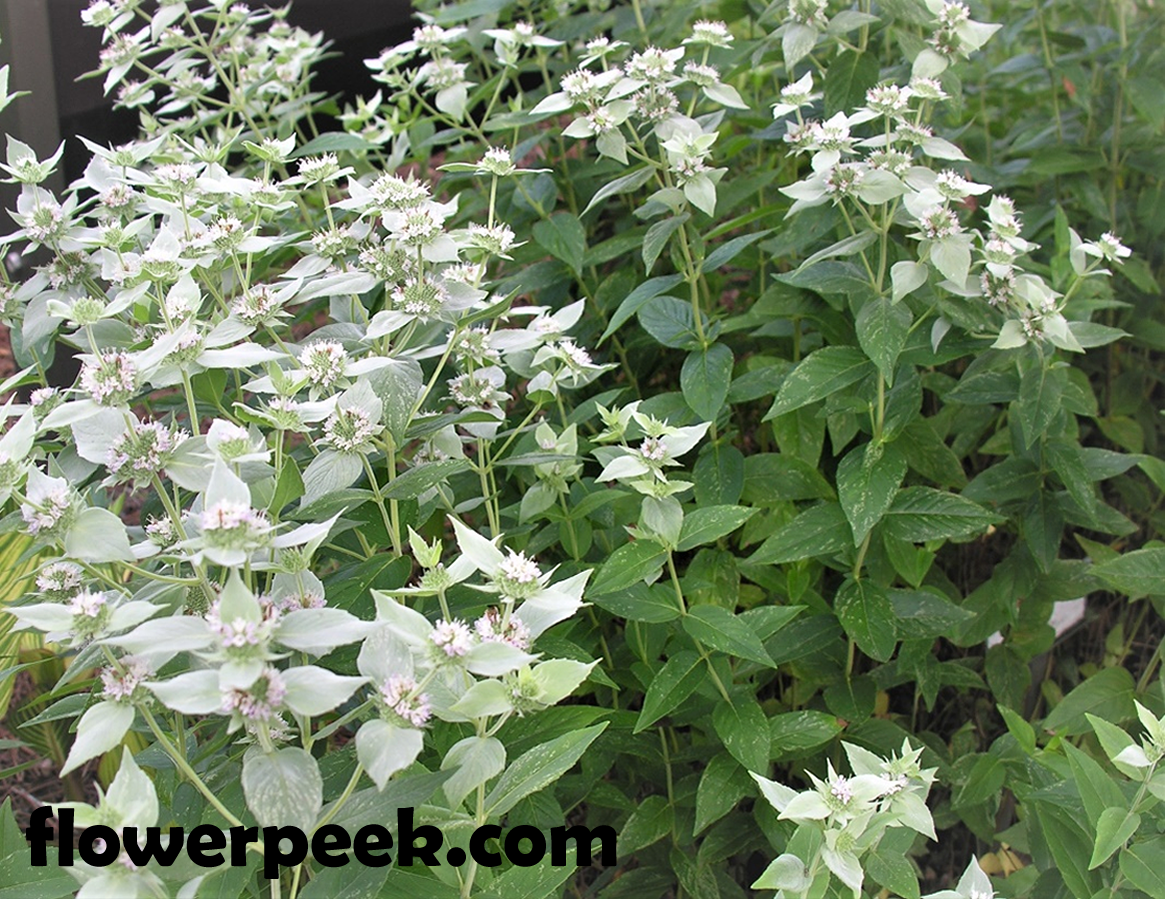The mountain mint plants are not actually
the same as true mints, mountain mint plants belong to a different family. Although,
they have a similar growth habit, appearance, and aroma, and they can be used
like true mints. The mountain mint plant care is largely hands-off, and it will
grow prolifically, you need to be very careful where you plant it.
Mountain Mint Plant Information
The Mountain mint is a group of about
twenty plants in the Pycnanthemum genus, mountain mint is native to the
southeastern U.S. The mountain mints are perennials and they bloom from about
July through September. The mountain mint grows in clumps up to about 2 to 3
feet tall. The mountain mints grow densely with dark green leaves that have a
strong spearmint aroma. The plants produce a profusion of pretty, tubular
flowers in pink or white. The uses of mountain mint are actually similar to
those of true mint and it includes making tea or using in both sweet and savory
dishes. As a garden element the plant is attractive in native beds, meadows,
and other naturalized areas.
How to Grow Mountain Mint in the
Garden
The care of mountain mint plant in
your garden will be easy once the plant is established, and that isn’t
difficult either if you have the right conditions. Like true mint, mountain
mint can easily grow well even in tough conditions and they will quickly
overpower and over-grow other plants if given the chance. You have to take care
in choosing where to place this plant, as it can take over beds and also become
a difficult weed to manage. The mountain mint plant grows best in zones four to
eight. The plant prefers full sun but will tolerate some shade. Its water needs
are not great and it also tolerates drought as well. You can start the mountain
mint plant from seed, planting outdoors when the last frost has passed, or you
can use transplants. Make sure you water until they are established, and then
leave the plant alone and it will thrive. You can either plant the mountain
mint where you are happy to have them roam or prune out some of the roots in
spring to keep them more contained to one location. Growing them in containers
are good options too.



Post a Comment